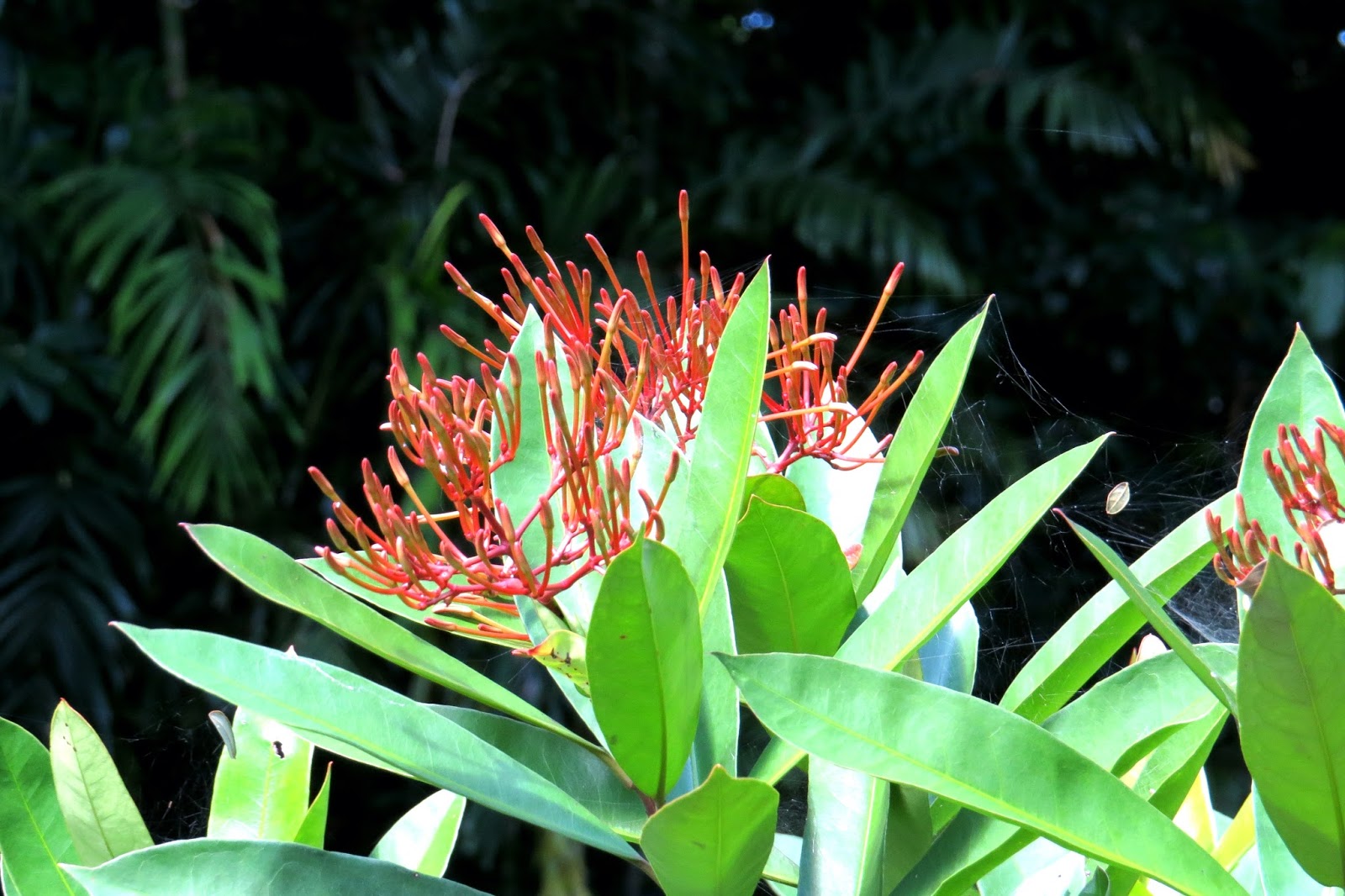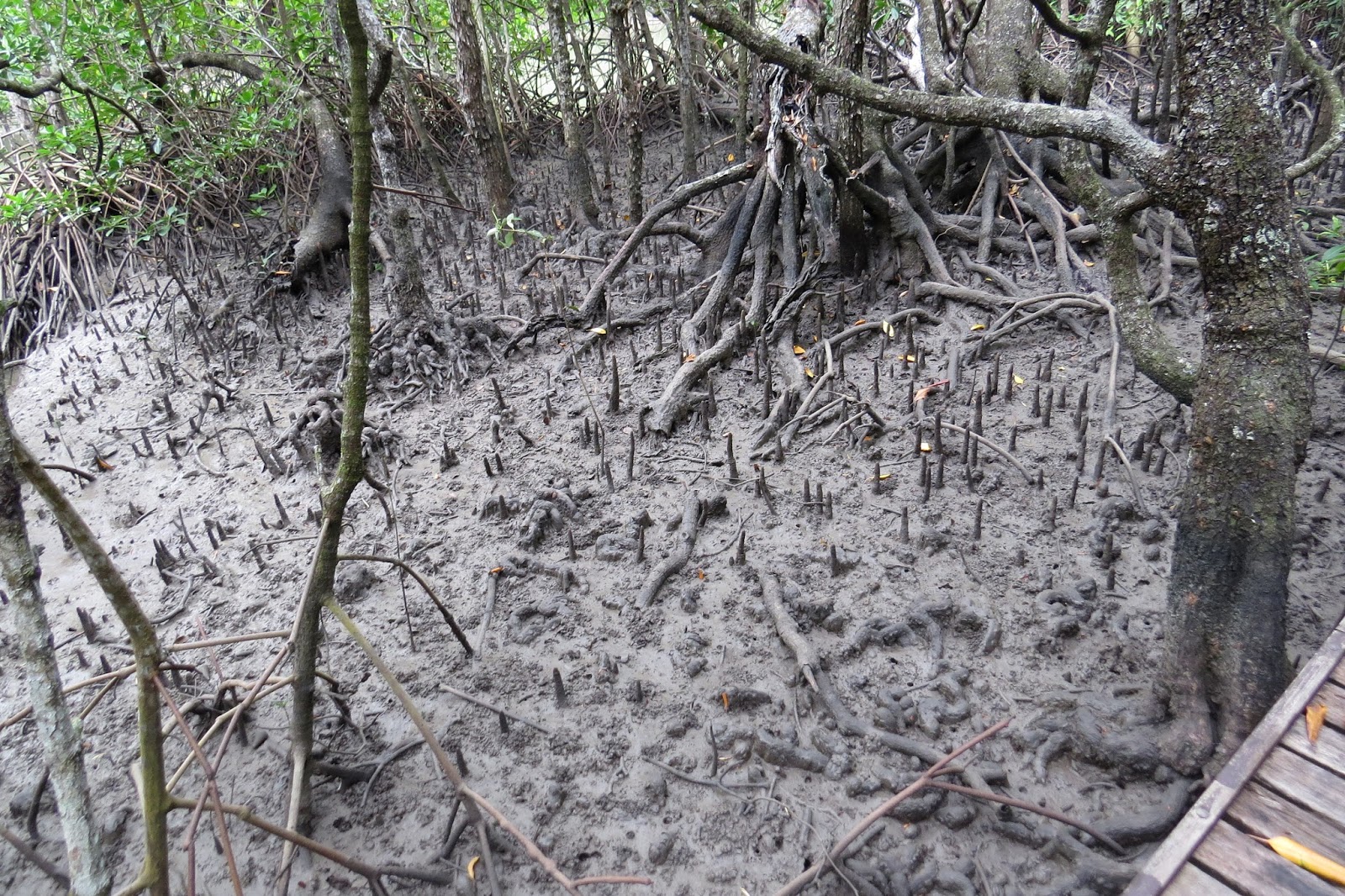 |
| For those shoppers interested in having their fortune told, Rusty’s Markets has it all. |
As our long term readers are well aware, we try to avoid some of the typical activities that drives floods of tourists to a particular area, often waiting in long queues (“lines” is US speak) for hours at a time.
 |
| Orchids and other flowers are for sale at reasonable prices throughout Rusty’s Markets. |
At times, visitors are scrambling for tickets to book dates and times that fit their short-stay schedules with the intent of getting one more attraction they’ve longed to see knocked off their endless “must do” list during a relatively short holiday. For most, this is the highlight of their trip.
 |
| Fresh greens appear to be a little higher priced than the grocery stores but mostly are organic. |
We’ve observed there are many types of tourists which often include; those who are constantly busy seeing the sites, filling each day with a constant stream of activities and; others who perceive a holiday as a time to relax, unwind, read a book while occasionally visiting a point of interest.
 |
| These are the biggest fennel bulbs we’ve seen. |
We fall somewhere in the middle of these two generalities. Throw in the fact that we often stay in a location for months at a time, on certain days we’re in the middle and on other days, totally zoned out of our surroundings living in the comfortable familiar routine we enthusiastically embrace as a part of our daily lives.
 |
| Locally grown chestnuts and walnuts. See photo below for prices. |
Over these past few months while living in Australia writing each day, on numerous occasions we’ve mentioned a need to tighten our belts while here to play a little “catch up” for recent huge outlays of cash for future travels. In doing so, we’ve accomplished two things.
 |
| When figuring that a kilogram is 2.2 pounds, these prices for walnuts and chestnuts is a bargain at USD $9.33 (per kilo). |
One, we’ve been able to comfortably “catch up” and two, we haven’t felt an sense of self imposed pressure to go sightseeing more than we’ve done thus far, visiting the equally enriching multitude of “free” things to see in this lovely area. We haven’t been disappointed at all, thoroughly relishing in all that we’ve seen to date.
However, one thing we’ve yet to do has gently nagged at us day after day knowing in our hearts and minds at some point, we’d sign up to visit…the Great Barrier Reef.
 |
| A shopper at Rusty’s Markets can stop for a Thai massage while shopping. |
From Cairns, a short 25 minute drive from our house to the port, followed by a 45 minute boat ride and we’ll arrive at the world’s largest coral reef. How could we not? For tomorrow, Wednesday, we booked a half day tour of the Great Barrier Reef consisting of several activities that fully meet our preferred types of activities.
 |
| These red peppers, called Capsicums in Australia are only USD $1.08 each, a fair price. |
Bear with us, dear readers, once again we’ll reiterate…we don’t snorkel, never plan to snorkel and spend little if any time, swimming in the ocean. Its not our “thing.”
A few of our Facebook friends have nagged us to “give it a try.” Even our grown kids, most of whom snorkel have given us a certain amount of heat that we don’t engage in this activity, especially based on our world travel and exposure to some of the best coral reefs and beaches in the world.
 |
| We didn’t recognize these cassava. From online research we discovered these can be dangerous to one’s health since some imported varieties contain dangerous levels of cyanide. Read here for details. |
Why don’t we snorkel? There are several reasons, important to us, that deters us from interest in this activity which include:
1. Tom sunburns easily. Since beginning our travels, neither of us has) had a single sunburn when we’ve exercised great caution. We seldom spend more than 20 minutes on each side to ensure an adequate safe dose of Vitamin D. He can’t stand the feel of sunscreen on his skin. It makes him cringe. Sure, he could wear a wetsuit, available for rental for reasonable fees. He doesn’t want to.
 |
| Tom pointed out this sign. |
2. We both have vision correction. Tom’s has a complicated correction making rental goggles unlikely to provide him with a good view without his glasses. I have mono vision, different correction in each eye wearing contacts to see. They can’t be worn in water. Neither of us would have a good experience based on this fact alone.
 |
| An whole fried fish. |
3. Photo taking: We don’t want to purchase an underwater camera at this point. As picky as I am over equipment, I’d require many accessories to have a good experience with a camera such as a “Go Pro.” We haven’t an inch of space for one more piece of equipment in our carry on bags. When we noticed our kids huge bag of “Go Pro” equipment, we knew it wasn’t for us. Bottom line: If we can’t take photos its just not as much fun for us. Plain and simple.
When we visited Highclere Castle (Downton Abbey) in the UK last year, I was disappointed to be unable to take interior photos although we decided to visit anyway taking many photos of the exterior. We always check every venue before booking to ensure we’ll be allowed to take photos.
 |
| We found one store that carries grass fed meat. If we’d had room in the freezer, we’d have purchased a few items. Instead, we buy our grass fed meat at a great little shop, Smithfield Choice Cuts. |
Our journey revolves around our ability to document our experiences in photos. Although I’m certainly not a professional, I see myself as more of a photographer than any other skills I may possess.
 |
| It would have been fun to purchase these truffles for sale at Fetish for Food but based on our remaining short period in Australia, we had to pass. |
Sure, I have a lot to learn about photography and eventually will purchase and learn to use a higher quality professional camera when technology advances to make them lighter in weight. Would a photographer visit a site where she/he wasn’t allowed to take photos? Hardly.
 |
| These sarongs looked appealing but not room in bags and I’ve never been good at making these work. |
4. Health reasons: We both have difficulty with our right shoulders. Most people would have had surgery by now to correct them. Instead, we’ve found ways with our diet and utilizing caution to keep the pain at bay.
 |
| Kiffler potatoes, so says the sign when its actually “Kipfler.” |
Currently, neither of us are experiencing any pain. This could easily change by a sudden motion. In addition, although I no longer have back pain due to a strict anti-inflammation way of eating, my spine remains comparable to a house of cards. Any sudden or startled motion could result in a disaster, putting a fast end to our travels. Our insurance plan excluded any injury to my spine in our health insurance policy. Why would we take the risk?
 |
| Clothing racks are scattered about Rusty’s Markets. |
It’s for these reasons we don’t zip lines or participate in certain activities potentially putting our current good health at risk. Snorkeling which I’d done years ago, can easily result in being startled and requires an amount of jumping in and out of boats, at times in countries with less precautionary measures, we opted out of snorkeling.
 |
| Rows of handmade jewelry lines a wall. |
Why visit the Great Barrier Reef if we don’t snorkel? Here again, because we want to. We’ll be able to tour the Great Barrier Reef in a glass bottom boat and we hope to go on the mini submarine that will give us another perspective, all the while taking photos.
We’ll also enjoy the boat ride each way meeting people and listening to the marine biologist on board the boat. With many more activities in the Green Island in the Great Barrier Reef area, we’ll surely have a good time. We always do.
 |
| Various vegetables for cooking Asian food. |
We chose to live our lives with a sense of reality. Who are we kidding? We have some issues we carefully protect. Who doesn’t? Ultimately, continuing on in our travels, having all of the extraordinary experiences we’ve had and will continue to have is more important to us than a few activities we choose not to do from time to time.
Now, I have to get back to searching for a cruise to Antarctica to fulfill our dream of standing on an ice floe with Emperor Penguins. Life is good whether we snorkel or not.
(Tomorrow, a new post will be uploaded with photos before we depart for the Great Barrier Reef).
Photo from one year ago today, August 25, 2014:
 |
| Tom was smiling while we relaxed while we dined in London, a restaurant we found on foot. For more details of our lengthy walks in South Kensington, please click here. |







































































































































































